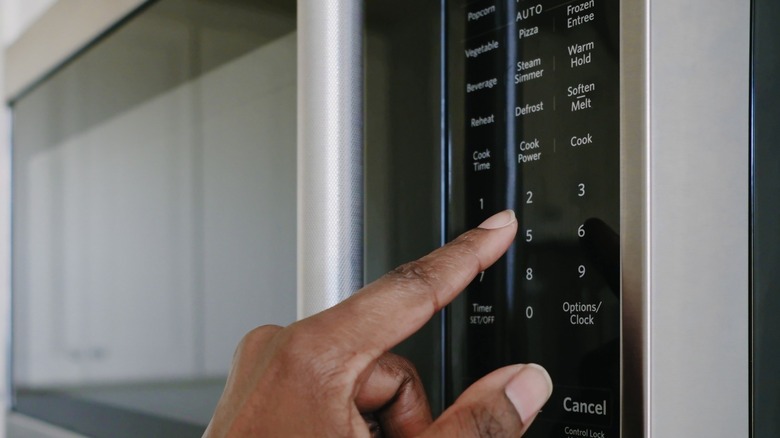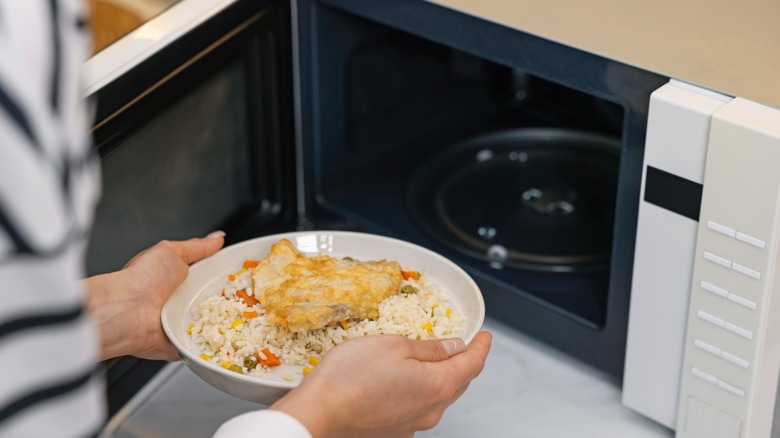The Microwave Button That You Seriously Have To Start Using
How many of your microwave's buttons would you say you use? Each appliance averages 16 buttons, and Jenn-Air even makes a model with 34, but there's a good chance you're not even using half of the options. Most people only use the basic functions like the number pad, "start"/"stop," and "add 30 seconds." Yet it's worth getting to know the "power level" button, if nothing else. If you cook in your microwave a lot, mastering this one can be a game changer.
Microwaves have long had an undeserved reputation of being a poor method for cooking food. Good for reheating in a pinch, sure, but not for cooking a meal. Part of the problem is that most of us don't learn how to use our microwaves to their full potential. The power level button does exactly what the name implies: It lowers the cooking intensity by adjusting how the microwave heats your food. It's the microwave equivalent of turning your oven down to 350 degrees Fahrenheit to cook a chicken breast instead of blasting it at 500 degrees. The intensity of the waves never actually changes — the timing does.
Microwaves, the actual waves that cook your food inside a microwave oven, are produced by a magnetron. When you change your power level, you change how the magnetron cycles on and off. At 70% power, for instance, the magnetron is on for 70% of the time and off for the remaining 30%. This means your food can cook more slowly and evenly, which can improve texture and eliminate that annoying issue where part of a dish is cold and part is hot.
Use lower power levels to let the heat spread through your food
Microwaves produced by the magnetron bounce off the walls inside your appliance and hit whatever food you put inside. These waves are absorbed by the molecules of your meal and cause them to vibrate, creating heat through friction. Despite rumors, microwaves do not cook food from the inside out. Instead, the waves only penetrate about 1 to 1½ inches. That's why your frozen burrito is still icy inside when the outside is scorching.
Lower power levels allow the waves to turn off at certain intervals so the heat can spread throughout your food without the exterior being constantly bombarded and overcooking. It's like letting carryover cooking finish a steak when you take it off the heat. When you master using power levels, there are all kinds of unexpected foods you can cook in your microwave. You can simmer your meals and even bake cookies in your appliance.
The lowest power levels are good for steaming foods like grains and gently cooking pasta without boiling over. Medium levels let you cook a cheesecake or even potato chips. With the right methods and some patience, you could even cook a whole chicken. It's just a matter of understanding how microwave heating works and applying its nuances to whatever you're cooking. But even if you don't want to experiment with full meals, try adjusting your power level. If your food isn't cooking evenly, you'll notice a difference.

